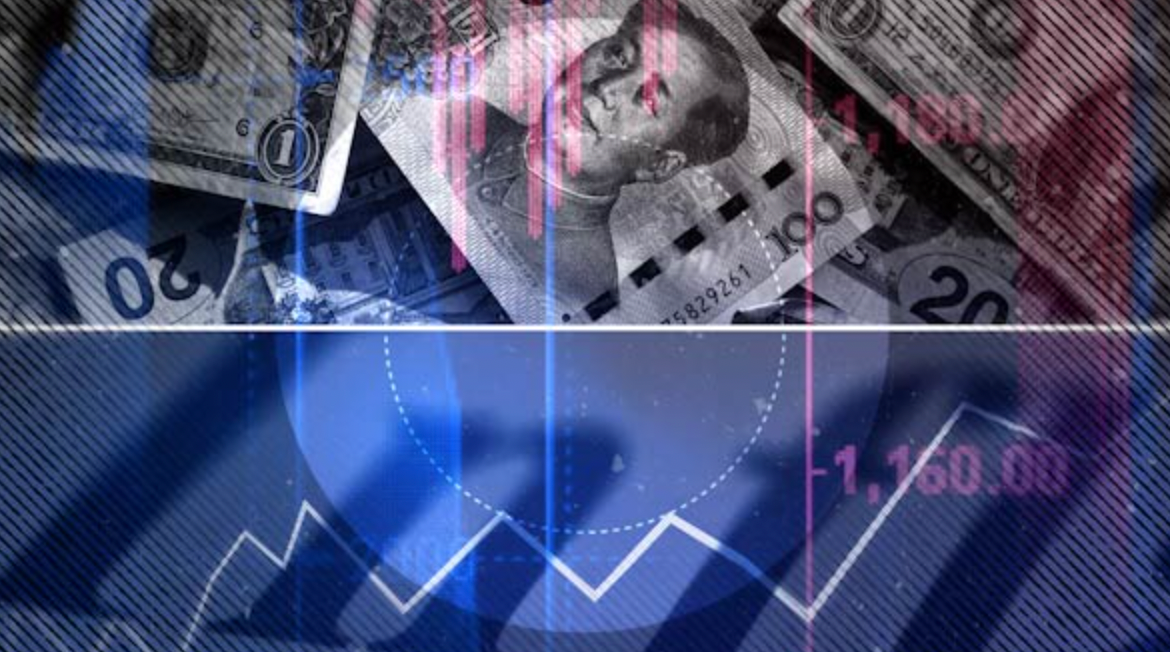Crypto Whales Are Loading Up — Are You?
New research shows the biggest crypto buyers are back. And this time? They could hold for the possibility that Bitcoin will surpass $100,000 in 2024. You don’t want to miss the next massive crypto bull run like we saw in 2020 and 2021. To know exactly what’s going on and what to buy… Get Access To Benzinga’s Best Crypto Research and Investments For Only $1.
This post contains sponsored advertising content. This content is for informational purposes only and not intended to be investing advice.
AT-A-GLANCE
ENTER TO WIN $500 IN STOCK OR CRYPTO
Enter your email and you'll also get Benzinga's ultimate morning update AND a free $30 gift card and more!
- Fed rate hikes have lifted the U.S. dollar to a 20-year high against a basket of six currencies, including the euro and yen
- A depreciating euro may make it harder for the European Central Bank to fight inflation
With exchange rates, everything is relative. Currency markets are sending some important warning signals about global growth and inflation coming from movements in the Chinese yuan, the euro and the Japanese yen.
Want Private Access to Benzinga Analyst?
Check out the latest strategies our team of experts are using every week so that you can always adapt to the market like the pros!—Get FULL Access to This Week's Webinar Here.
Scan the above QR code for more expert analysis of market events and trends driving opportunities today!
After a long period of stability, recent depreciation in the Chinese yuan is signaling that China’s economy may be slowing more than has been anticipated. COVID-related lockdowns of entire cities have weakened the economy. In addition, export demand for Chinese goods may be decelerating as the U.S. and Europe exit the pandemic and shift consumption patterns back toward services and away from goods.
The message from the depreciation trends in 2022 for the euro and the Japanese yen are more about inflation and not growth. Monetary policy differences are in the spotlight. The Federal Reserve has moved first to raise rates and plans to shrink its balance sheet. The European Central Bank (or ECB) still has negative short-term interest rates, while the Bank of Japan is keeping its whole yield curve under tight control with bond yields not far above zero.
Currency weakness can be a transmission conduit for importing inflation from the strong currency country. That is, U.S. dollar strength coming from monetary policy differences has the potential to make it harder to fight inflation in Europe and to ignite more inflation in Japan than analysts currently anticipate. So far, the ECB and Bank of Japan have chosen to tolerate currency depreciation rather than move away from their current interest policies and follow the Fed’s lead.
This post contains sponsored advertising content. This content is for informational purposes only and not intended to be investing advice.
Crypto Whales Are Loading Up — Are You?
New research shows the biggest crypto buyers are back. And this time? They could hold for the possibility that Bitcoin will surpass $100,000 in 2024. You don’t want to miss the next massive crypto bull run like we saw in 2020 and 2021. To know exactly what’s going on and what to buy… Get Access To Benzinga’s Best Crypto Research and Investments For Only $1.
